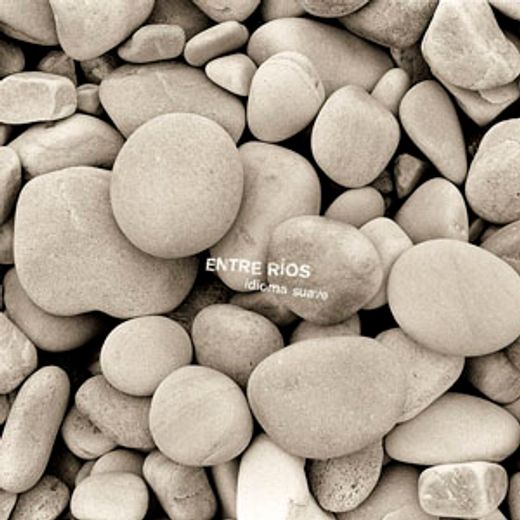









During the last months Argentina has been extensively featured in the news due to the chaotic and extreme situation the country is currently going through. Meanwhile, this three-piece from Buenos Aires called ENTRE RÍOS sends us a gentle sound postcard, a collection of placid, delicate songs; music to dream to with your eyes wide open.
ENTRE RÍOS (“Between rivers”) is formed by Sebastián Carreras, Gabriel Lucena and Isol. Sebastián is the owner of indie label Índice Vírgen; through it Argentinian audiences have managed to know some Elefant bands such as LE MANS or ANA D. He writes the songs and the lyrics. Then Gabriel (who is a sound engineer for a living) transforms the songs into awesome electronic landscapes full of ideas and extreme good taste.
To top it all, Isol incorporates her ethereal, hyper personal vocals and a very attractive Argentinian accent (or, as the album title implies, her “soft language”). She is involved in different artistic activities like writing children stories for Mexican book companies or working as an illustrator for big Argentinian newspaper “Clarín”; she’s also a lyrical singer, though she moves in a purely pop context while in ENTRE RÍOS. Her sweet, unaffected moods could remind us of Spanish sixties singer Jeanette but there’s something in her mysterious, distant timbre that is really distinctive: it’s no use trying to compare her, better surrender to her natural charms.
Sebastián and Gabriel started to work together under the name of TUS HERMOSOS and released a CD entitled “Anatomía de la melancolía”. Meanwhile, Sebastián meets Isol and invites her to sing in “Dame”, a song that would be released as TUS HERMOSOS but would really mean the end of that band and the beginning of ENTRE RÍOS.
Índice Virgen releases two EPs by ENTRE RÍOS which are acclaimed by the media in Argentina as a really innovative, singular offer, being placed in the top of the avant-garde pop scene of their country. The band’s very peculiar conception of live shows is an amazing surprise as well: on stage Sebastián and Gabriel play no real instruments but mix the different tracks that form the song, just on the spot; by proceeding this way, every new show provides new, everchanging versions of the songs; over them, the live vocals of Isol prove to be as mesmerizing and haunting as on record. There is no silence between songs; they blend one with the other as in a Dj session.
On March 2001 Elefant releases “Litoral”, a seven inch for legendary Elefant’s Single Club. This brings the music of ENTRE RÍOS to many new audiences; among them, famous Uk’s BBC Radio One DJ John Peel, who played their music several times.
And now we are proud to bring you the debut album of ENTRE RÍOS. Thirteen songs that show the band’s talent at its very best. A true display of elegance, personality and beauty that should cause a real commotion as very few 2002 releases have such an attractive gleam. The visual aspect of the album is equally stunning thanks to the wonderful design of Javier Aramburu.
The first number of the album is a musical adaptation of some rhymes (“Rimas”) by classic poet Rubén Darío. This is made in such a fresh, natural way that you could think the poet was thinking in Isol when writing these lines.
This is only the first appetizer of a sublime collection of songs that combine the some tracks from the previous Elefant single (“Litoral”, “Tuve”, “Sólo soñaba”) with new tracks so impressively beautiful that it’s really difficult to choose one in particular; they form such a compact entity that reveals the best quality in ENTRE RÍOS: this music sounds familiar and catchy from the very first listening, but at the same time you can’t deny its inherent originality.
It’s hard to find reference points to describe ENTRE RÍOS: even the band members confess they don’t coincide too much in musical tastes, and maybe that’s why their songs sound so personal. They can give us some hints though, by declairing themselves fans of film-maker David Lynch and his score composer Angelo Badalamenti. Other influences could range from Phil Spector to Brian Eno: all of them chief masters in the fine art of creating enigmatic atmospheres. If we look closer into the songs we can also bump into the sampler from Roberto Carlos that opens “Tuve”; whereas “Primero de enero” features an organ riff that pay homage to LOS GATOS’ “La balsa”, a rock hit in Argentina during the sixties.
But none of these multiple paths can lead us to solve the mystery of ENTRE RÍOS. So the only thing we can do is to get carried away by this rushing stream of liquid sensations contained in “Idioma suave”: one of the most outstanding Spanish-sung pop albums ever.



















